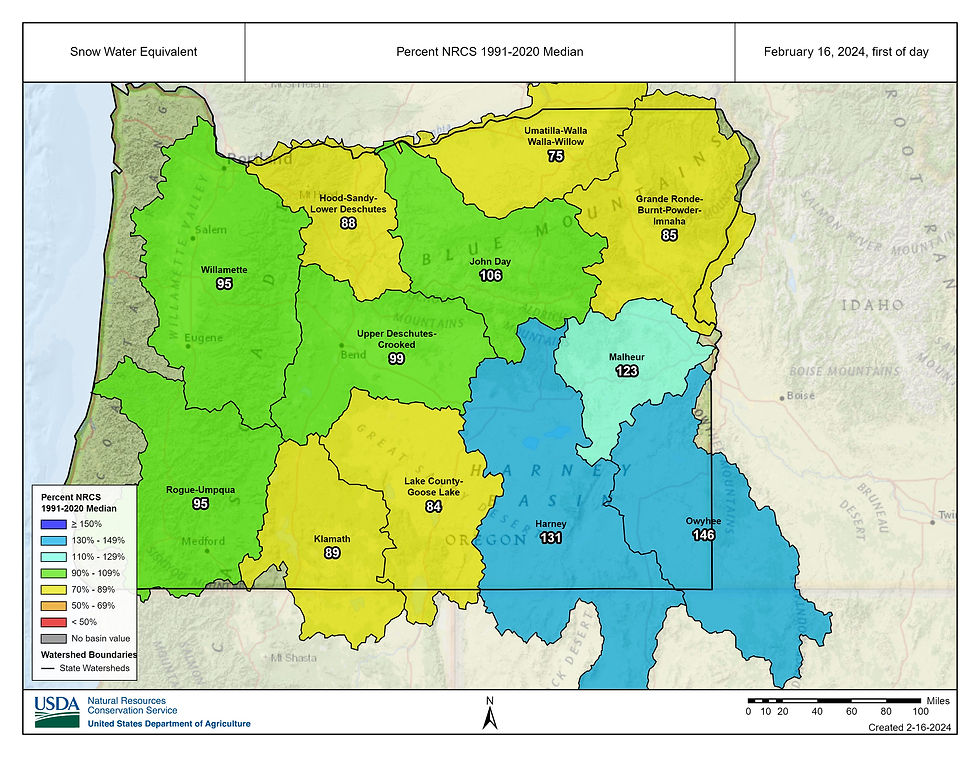Tracking Oregon Snowpack
- Beth Boos
- Feb 16, 2024
- 2 min read
Some of our staff here eagerly watch snow reports for skiing and snowboarding, but most of us are interested in how the snowpack impacts our future water inputs. The Natural Resources Conservation Service tracks snowpack and snow water equivalent to forecast streamflows. In the figure below, you can see the comparison of current conditions to the last 30 years of median snow water levels throughout the state of Oregon. The percentage (91% in the Rogue-Umpqua) tells us how current conditions compare to previous snow conditions.
We are interested in snow water equivalent because that is a calculated value that tells what the depth of the snowpack is if it was liquid (aka, the amount of snowmelt that will enter the watershed).

NWCC iMap provided above as of February 16, 2024.
Although this tool is incredibly useful, there are other important considerations concerning available stream water. Climate change is driving early melting of snowpacks, which can increase water stress in the western United States. Snow is melting, on average, 18 days earlier than historical snowpack seasons.
What does this mean? If snow melts and flows off the mountains earlier in the season, those flows won’t last as long into the summer. This is crucially important in Oregon’s drier regions. Earlier snowmelt also leads to increased wildfires (and longer fire seasons). Although large storm events bring additional snowpack, rising temperatures cause that buffer to melt earlier and have minimal impact on long-term water availability.
As an added bonus (if you can call it that), snowpack also influences temperatures in a different way– through what is called albedo. Albedo is the fraction of sunlight that is reflected from the Earth back to space. If you can recall back to middle school science, white objects (such as snow) reflect all wavelengths of light. That means the light is not converted to heat, ultimately allowing the temperature to remain stable. If, however, the ground is not covered in snow as we see earlier snowpack melts, that reflection does not occur. Exposed ground, such as soil, absorbs more light, which is then converted to heat. This is what is called a “feedback loop” as the planet warms even more.
This is not an uplifting topic, but part of our role as scientists is to increase the understanding of how our world is responding to climate change. By reading this and learning, you are contributing to the conversation. Together, we can be honest about the ups and downs of climate change while encouraging those around us to be conscious of Earth's future.
References:
Nat Geo


Comments